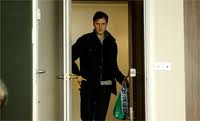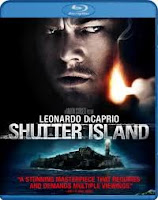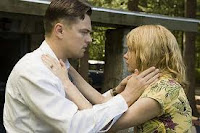 Strand (BBC World Service), prompted by the ever-incisive Anna McNamee, I discussed Olivier Assayas' film Carlos, which opened last Saturday at the London Film Festival. Our discussion started with the fact that the movie was originally made as a five-hour mini-series for TV (which is the version the LFF, to their credit, showed), and it is now being released in two versions, a two-part saga much like last year's Mesrine, and a 2:40 version, which I saw, and which hangs together well, although omitting some of Carlos' famous 'missions'.
Strand (BBC World Service), prompted by the ever-incisive Anna McNamee, I discussed Olivier Assayas' film Carlos, which opened last Saturday at the London Film Festival. Our discussion started with the fact that the movie was originally made as a five-hour mini-series for TV (which is the version the LFF, to their credit, showed), and it is now being released in two versions, a two-part saga much like last year's Mesrine, and a 2:40 version, which I saw, and which hangs together well, although omitting some of Carlos' famous 'missions'.The crucial point about these formats is not whether or not Carlos (shot on wide-screen 35mm) is or isn't a film (it was excluded from consideration at Cannes) but that the sheer size of the TV mini-series format allows the film to take a documentary-like perspective. It also points out that the DVD box-set may become the preferred vehicle for watching the best filmed dramas we can produce these days. Were Carlos scripted or edited as a normal feature film, 100 minutes or even two hours, there would be a greater necessity for a stronger story arc, a more simplistic reduction of Carlos' motivations, his career, his position as hero, villain, anti-hero. As it is, the film joins him in media res, training with the PFLP, his Venezuelan upbringing by a left-wing father, and education in Moscow isn't mentioned. Instead, we see him in the middle of the internal conflicts for control of the Palestinian movement, and this is the situation that will repeat itself over and over again, as the shifting faces of real-politick make the life of a revolutionary more and more difficult, until it finally becomes almost redundant.
This is becoming a familiar format for a sort of sub-genre of revolutionary 70s retro chic, which mixes facets of the gangster/spy film with its pseudo-documentary approach (Mesrine again is a reference point), like Munich, One Day In September, El Lobo, or Good Morning, Night, films that draw on Battle Of Algiers and Reds, The Godfather and The Informer. You can also see the ways straight-forward documentaries borrow feature-film techniques; the quick-cutting and pacing of Argentina's excellent but overlooked Trelew, or even the crime-scene reconstructions of Enron. More to the point, last year's Baader-Meinhof Gang took a similar approach, yet had a more conventional story arc because it used Ulrike Meinhof as its conscience. In fact, looking at Carlos' German 'army', it's as if some of the second-generation BMG characters have switched movies and allegiances. In particular the character of the trigger-happy raging young girl (Julia Hummer as the apropriately named 'Nada') echoes the dissolve between the two BMG generations.
But of course there is a story arc, and that is Carlos' progression to international celebrity and counter-culture superstar. The whole 'Jackal' business was a media creation, which gave him a James Bond kind of identity, which he inevitably feels compelled to live up to. In this sense, Edgar Martinez, who is brilliant in coping with the changes the role demands, reminded me of Val Kilmer as Jim Morrison in Oliver Stone's The Doors, particularly in their fat decline as their celebrity overtakes their artistic (or terroristic) success.
 Martinez has spoken of the appeal of playing a revolutionary who insisted on dressing in Pierre Cardin, and he's also a liberator still trapped in macho attitudes toward the women in his life as well. When he seduces, almost claims, the girlfriend of the head of his German cell, it's played like a 1970s porno film, and when he leaves her it's like an 80s soap, Dallas played as Damascus. Although these points of personal politics do, in the end, give the character his structure (he was, after all, captured while recovering from a liposuction operation), the fact that the film has the scope to continue to play with the changing politics, the way Carlos eventually becomes more of a burden to whomever his latest employer is to justify both the danger of his celebrity and the lack of value he provides in terrorist operations.
Martinez has spoken of the appeal of playing a revolutionary who insisted on dressing in Pierre Cardin, and he's also a liberator still trapped in macho attitudes toward the women in his life as well. When he seduces, almost claims, the girlfriend of the head of his German cell, it's played like a 1970s porno film, and when he leaves her it's like an 80s soap, Dallas played as Damascus. Although these points of personal politics do, in the end, give the character his structure (he was, after all, captured while recovering from a liposuction operation), the fact that the film has the scope to continue to play with the changing politics, the way Carlos eventually becomes more of a burden to whomever his latest employer is to justify both the danger of his celebrity and the lack of value he provides in terrorist operations.I had seen little in Olivier Assayas' work to suggest he'd make a film like this (Boarding Gate, which could be seen to share some elements, is truly abominable), my thought is that the structure required tight dramatic control, and the centrality of the Carlos role allowed the camera's and script's focus to remain on Ramirez. In fact, you sense when Carlos gets with Magdalena Kopp, that Assayas sees a lot of Asia Argento in Nora Van Waldstatten, but the German actress is too strong to fall into that trap
 . In fact, at times it's as if Assayas is making Bonnie and Clyde, but without having to worry about Bonnie!
. In fact, at times it's as if Assayas is making Bonnie and Clyde, but without having to worry about Bonnie!Assayas also takes a remarkably neutral political stance. The film's historical scope makes that easier, we see the hidden hands of the Soviets, their allies, as well as the various Middle Eastern countries and their shifting allegiances. One of the problems with Carlos is that his idea of who the enemy actually is never really takes shape; the specific goals of the Palestinians are not necessarily those of revolutionaries committed to overturning the international capitalist system. As Carlos becomes a glamourous gun for hire, this becomes more and more of a problem--the cult of the personality overpowering his revolutionary zeal. This becomes most telling when one of his German followers quits, because when terrorists separate the Jews from the other hostages, it reminds him too much of his German past. When the Berlin Wall falls, everyone keeps saying 'things have changed' and Carlos, like many celebrities, is trapped in his image from his days of stardom.
The best tribute to this film is that, having seen the nearly three hour version, I actually wanted to watch the full five hours, and see what I'd missed. In whichever version you can, you should see it.
























